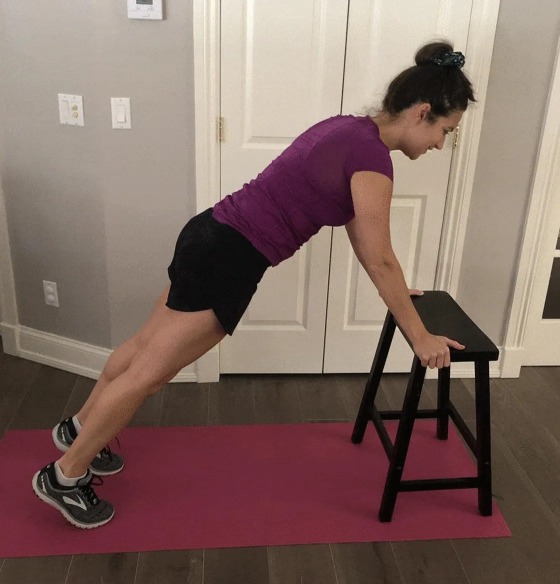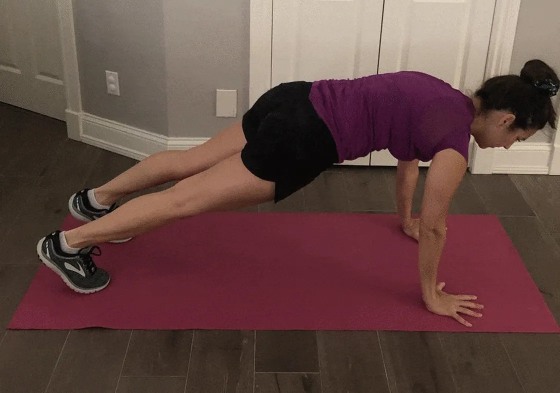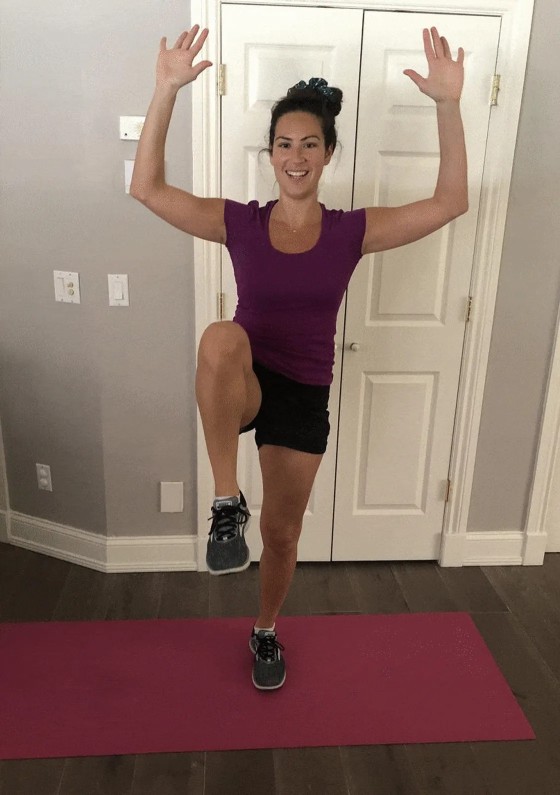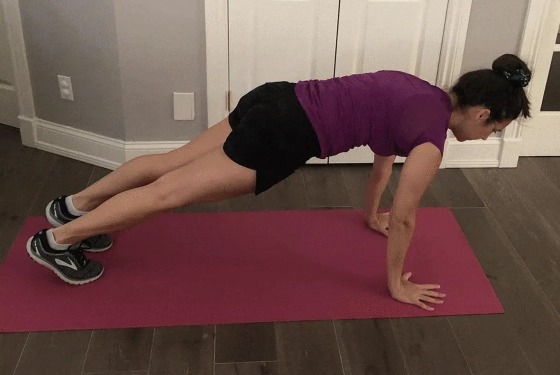Mountain climbers are a great way to get your heart rate up without putting stress on the joints.
In this series, we’re helping you master basic exercises — as if you had a personal trainer by your side! Our goal is to equip you with the knowledge to perform these moves properly in order to get better results and prevent injury.
You’d be hard-pressed to find a bootcamp class that doesn’t call for dropping into mountain climbers at some point. Whether you’re looking to improve leg and core strength or raise your heart rate, mountain climbers are a move that will get it done.

The exercise gets its name because the move simulates the intense workout of climbing a mountain. Emphasis on intense. Because the movement is so commonly incorporated into workout routines and it appears simple enough to perform, it’s often underestimated. But mountain climbers are a high-intensity, calorie-burning exercise that works your entire body. That’s why maintaining proper form is key to performing the movement correctly and getting the most out of it, while keeping yourself safe.
The benefits of mountain climbers
Mountain climbers target many major muscle groups, including the abs, lower back, hamstrings and glutes. Strong glutes and core muscles help us maintain upright posture, and mountain climbers are the perfect move to strengthen both these areas.
Although mountain climbers are high intensity and help raise your heart rate, they’re also low impact. Low-impact exercises are great for people who suffer with joint pain. However, it’s sometimes hard to find low-impact exercises that are effective at burning calories. Mountain climbers are accessible to most people and are a great move to incorporate into any workout routine.
The common mistakes people make when doing mountain climbers
Like the plank, mountain climbers require a specific position to ensure proper performance. A lot of my clients end up arching their backs and raising their hips too high. This disengages the core and will devalue the the move, while also putting stress on the back.
I also see a lot of my clients moving too quickly, bouncing on their toes as they move from foot to foot. Although going faster may feel like a more intense workout, it actually makes it more likely that you’re not properly engaging your core. To fix these mistakes:
- Keep your back flat and straight instead of arched. Make sure you’re not piking your hips and that you maintain a straight line from your head to your heels.
- Think of keeping your body in the plank position while performing the mountain climber. Although you’ll be moving, the positioning of your back and hips should be the same as in a plank.
- Keep a steady pace. Faster doesn’t mean better in this case, so make sure you’re engaging your core with each movement and don’t compromise form for speed.
How to do a modified mountain climber

Mountain climbers require a lot of precision and full-body engagement. If you’re not there yet, there are plenty of modifications that will help you gain the confidence and strength to perform the real thing correctly.
To perform a modified mountain climber, use a chair to lean on. This improves stability and decreases the intensity of the move. Place the chair in front of you. Put your hands on the seat directly below the shoulders with your arms straight. Extend your legs straight out behind you and balance on your toes; your body will be on a slight angle. Begin performing a marching movement, bringing your left leg toward your left elbow, then your right knee toward your right elbow. Continue to alternate legs and squeeze your core.
How to perform a mountain climber correctly

Follow these step-by-step instructions to ensure you’re performing mountain climbers properly:
- Begin in plank position, keeping your back straight, your hips low and your core engaged.
- Bring your right knee under your chest toward your right elbow.
- Return your right leg back to plank position; bring your left leg under your chest toward your left elbow.
- Repeat while alternating your legs, keeping a steady pace.
- Remember to breathe and concentrate on engaging your abs, glutes and hamstrings.
4 exercises that will help you master the mountain climber
It’s common to make mistakes while performing mountain climbers, especially if you’ve never tried them before. Here are some moves that work the same muscles; try them first to build strength that will make performing climbers easier.

Plank
Being able to perform a solid plank will definitely help you perform mountain climbers properly. Put your hands on the floor below your shoulders, keeping your arms straight. With your back straight and your hips low, lift your body weight up, squeezing your core. Hold this position for 10 seconds. Repeat 10 times.

High knees
High knees require the same type of leg movements that mountain climbers do, but instead of being on the ground, you’ll be standing. Hold your arms out to your sides in a “cactus position” with your elbows bent at 90 degrees and your hands pointing up toward the ceiling. Cactus arms mimic the stationary upper body in mountain climbers, which recruits more of your core muscles. Holding your arms steady, bring one knee up toward your chest, stopping at waist height so that you’re making a 90-degree angle at the knee. Alternate your legs, keeping a quick pace. Repeat 10 times per knee.

Plank jack
The plank jack falls in between plank and mountain climbers in terms of intensity, making for a perfect stepping stone. In plank position, begin jumping your feet out and in as if you would if you were doing a standing jumping jack. Keep your core and glutes engaged, and try not to let your hips bounce. Repeat for 10 jumps. (To modify: step each foot out to the side and back instead of jumping.)

Squats
Mountain climbers require strong glutes, so performing squats beforehand will activate these muscles. Standing with your feet shoulder-width apart, bend at the hips as if you’re sitting back into a chair. Stand back up squeezing the glutes at the top, and repeat. Use your glutes and abs to bring your body up and down. Repeat 10 times.